Potential Output: Concepts and Measurement - Department of Labour
Potential Output: Concepts and Measurement - Department of Labour
Potential Output: Concepts and Measurement - Department of Labour
You also want an ePaper? Increase the reach of your titles
YUMPU automatically turns print PDFs into web optimized ePapers that Google loves.
Darren Gibbs 81<br />
Fourthly, Plosser <strong>and</strong> Schwert (1979) demonstrate both theoretically <strong>and</strong><br />
empirically that Okun’s procedure <strong>of</strong> inverting a regression <strong>of</strong> unemployment on<br />
output is valid only if the correlation coefficient is equal to ±1.<br />
Finally, a more significant problem with the technique is that it can result in<br />
potential output series which display unreasonable volatility. Indeed, in a recent<br />
study by the OECD (1994) using an Okun’s Law based technique, they found<br />
that the potential output series derived for some countries was more volatile<br />
than the actual output series on which they were based.<br />
Because <strong>of</strong> these shortcomings, the reliability <strong>of</strong> potential output estimates<br />
obtained using these techniques also suffered as output <strong>and</strong> inflation became<br />
more variable in the 1970s. As noted by Adams et al (1987):<br />
. . . because these approaches tend to deal somewhat mechanically with any change<br />
in economic conditions, they are not well suited to separating permanent from<br />
transitory influences. These approaches tend to extrapolate any change in growth<br />
automatically, provided it is maintained long enough, <strong>and</strong>, even when they produce<br />
correct judgments about historical developments in potential output, they do not<br />
identify the underlying determinants. Such methods are, therefore, unreliable for<br />
forecasting, particularly when the economic environment is undergoing substantial<br />
change.<br />
Adams’ last comment is particularly pertinent in the case <strong>of</strong> New Zeal<strong>and</strong>.<br />
The output-capital ratio approach<br />
Whereas Okun’s measure relies solely on the labour market as an indicator <strong>of</strong><br />
the output gap, this approach hinges on the existence <strong>of</strong> a stable proportional<br />
relation between the stock <strong>of</strong> capital <strong>and</strong> potential output. The method assumes<br />
that fluctuations in the observed output/capital ratio are largely due to<br />
deviations in output from its potential level.<br />
An example <strong>of</strong> the use <strong>of</strong> this method is contained in Panic (1978). First he<br />
constructs an output/capital ratio series ( Q t<br />
K ), <strong>and</strong> then he fits a least squares<br />
t<br />
linear trend to the actual output/capital series, to yield a ‘capacity’ output/<br />
capital series, as follows:<br />
⎛ Qt<br />
⎞<br />
⎜ ⎟ = α0 + α1t+<br />
e<br />
⎝ K ⎠<br />
t<br />
t<br />
where Q t<br />
<strong>and</strong> K t<br />
represent output <strong>and</strong> the capital stock at time t <strong>and</strong> e t<br />
is a<br />
r<strong>and</strong>om error. The capacity output/capital ratio is taken to be the points on a line<br />
with the time derivative α 1<br />
raised just enough so that it touches only one <strong>of</strong> the<br />
observed Q t<br />
Q<br />
c<br />
t<br />
K data points. The adjusted trend ratio ( )<br />
t<br />
K is the assumed capacity<br />
t<br />
output/capital ratio. From here, a series measuring potential output is simply<br />
Q<br />
c<br />
t<br />
.<br />
given by K t ( K )<br />
t



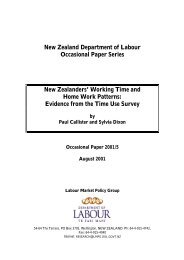

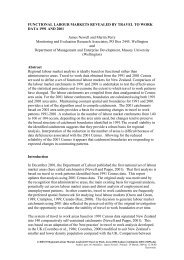

![a note on levels, trends, and some implications [pdf 21 pages, 139KB]](https://img.yumpu.com/27285836/1/184x260/a-note-on-levels-trends-and-some-implications-pdf-21-pages-139kb.jpg?quality=85)


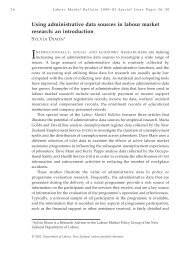
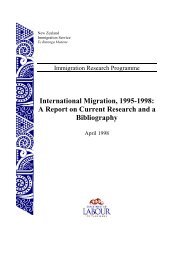

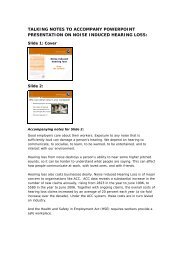
![Labour Market Trends and Outlook - 1996 [pdf 18 pages, 94KB]](https://img.yumpu.com/27285764/1/184x260/labour-market-trends-and-outlook-1996-pdf-18-pages-94kb.jpg?quality=85)

